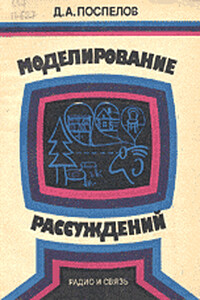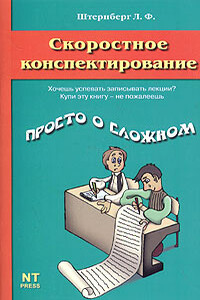Древнегерманские двучленные имена - [93]
2. The combination of the elements of the onomastic compounds presupposes an analysis of their valency - the ability to join components to the right and to the left. In this chapter is a description of the elements represented only in the first position of the onomastic compound, only in the second one and those that are met both in the first and in the second position, as well as an investigation of the mechanism of combining the elements within a compound. One can take for specific features of the syntactic combination of the elements in the onomastic compounds 1) the selection of the elements participating in the formation of names (e. g. the impossibility of tautological compounds, the use of the adverbs and prepositions only in the first place, the preposition of the substantive to the verb under the influence of the dominating syntactic type SOV); 2) the original differentiation of the masculina and feminine registered in the male and female names; 3) the restiction in the set of the second elements, which are the kernel of the onomastic compounds distributed among the three lexical groups, designating the appurtenance to a certain class (e. g. *gastiz ‘a guest’, *mannz ‘a man’, *pegwaz ‘a servant’, *weniz ‘a friend’), their verbal equivalents (*waldaz ‘ruling’, *warjaz ‘protecting’) and to the attributes of the heroic model of the universe (*rlkaz ‘mighty’, *meriz ‘famous’, *harduz ‘firm’), as well as a considerable prevalence (more than twice) of the first elements (160), modifying the semantics of the second ones (67); 4) the heterogency of the onomastic space including the central and the marginal zones.
3) The morphology of the onomastic compounds. There are 4 models of these compounds: coordinative with equal components, determinative with the government and dependence of one component from the other, possessive ones and those with the first component (mainly a preposition) governing the second one. The main distinction of the Old Germanic proper names from the appellatives consists in the representation of several models which are absent among the appellatives (e. g. ‘the ordinal & adjective’ - *Fruma-rIkaz ‘the first, the mighty one’), and in the disproportion between them (e. g. the scarcity of the bahuvrihi among the appellatives and its great frequency among the proper names, the productivity of the coordinative onomastic compounds).
4) The following peculiarities are characteristic of the semantics of the proper names: 1) the appearence of the additional semantic relations between the components of the name (e. g. *Austra-gautaz, literally ‘an East-Gaut’, i. e. ‘a Gaut of / from / in the East’); 2) the functioning of the secondary names in which the logical relations between the components of the compound are violated from the view-point of the rules of the onomastic tradition, especially owing to the necessity to combine in the name of a child one component from the father’s and another from the mother’s name (they do not always fit together) 3) the existence of the most favourable spheres, e. g. the military one; 4) the idealization, the prevalence of the positive attributes in comparison with the neutral or negative «ones; 5) the influence of the heroic model of the universe on Uhe constitution of the onomastic system (e. g. the five designations of the war - *badu>o-, *gunpjo*hadu-, *heldjo-, *welgaz and a great number of synonyms (e. g. ‘a spear’ - *gaiza-, *uzda-, ‘a sword’ - *heru-, *branda-)); 6) the penetration of the mythological motives into the semantics of the onomastic compounds (e. g. *Ansu-geislaz refers to a myth about the war between the two classes of Scandinavian gods - the Ases and the Vanes and to an exchange of the hostages); 7) the static, “substantive” character of the Old Germanic onomastic system, manifested in the scarcity of the verbs, symbolizing the dynamic aspect).

Описываются дедуктивные, индуктивные и правдоподобные модели, учитывающие особенности человеческих рассуждений. Рассматриваются методы рассуждений, опирающиеся на знания и на особенности человеческого языка. Показано, как подобные рассуждения могут применяться для принятия решений в интеллектуальных системах.Для широкого круга читателей.

Описана система скоростной конспективной записи, позволяющая повысить в несколько раз скорость записи и при этом получить конспект, удобный для чтения и способствующий запоминанию материала. Излагаемая система позволяет на общей основе создать каждому человеку личные приемы записи, эриентированные на специфику конспектируемых текстов.Книга может быть полезна студентам, школьникам старших классов, научным работникам, слушателям курсов повышения квалификации.

В книге рассказывается история главного героя, который сталкивается с различными проблемами и препятствиями на протяжении всего своего путешествия. По пути он встречает множество второстепенных персонажей, которые играют важные роли в истории. Благодаря опыту главного героя книга исследует такие темы, как любовь, потеря, надежда и стойкость. По мере того, как главный герой преодолевает свои трудности, он усваивает ценные уроки жизни и растет как личность.

В книге рассказывается история главного героя, который сталкивается с различными проблемами и препятствиями на протяжении всего своего путешествия. По пути он встречает множество второстепенных персонажей, которые играют важные роли в истории. Благодаря опыту главного героя книга исследует такие темы, как любовь, потеря, надежда и стойкость. По мере того, как главный герой преодолевает свои трудности, он усваивает ценные уроки жизни и растет как личность.

В книге рассказывается история главного героя, который сталкивается с различными проблемами и препятствиями на протяжении всего своего путешествия. По пути он встречает множество второстепенных персонажей, которые играют важные роли в истории. Благодаря опыту главного героя книга исследует такие темы, как любовь, потеря, надежда и стойкость. По мере того, как главный герой преодолевает свои трудности, он усваивает ценные уроки жизни и растет как личность.

В книге рассказывается история главного героя, который сталкивается с различными проблемами и препятствиями на протяжении всего своего путешествия. По пути он встречает множество второстепенных персонажей, которые играют важные роли в истории. Благодаря опыту главного героя книга исследует такие темы, как любовь, потеря, надежда и стойкость. По мере того, как главный герой преодолевает свои трудности, он усваивает ценные уроки жизни и растет как личность.